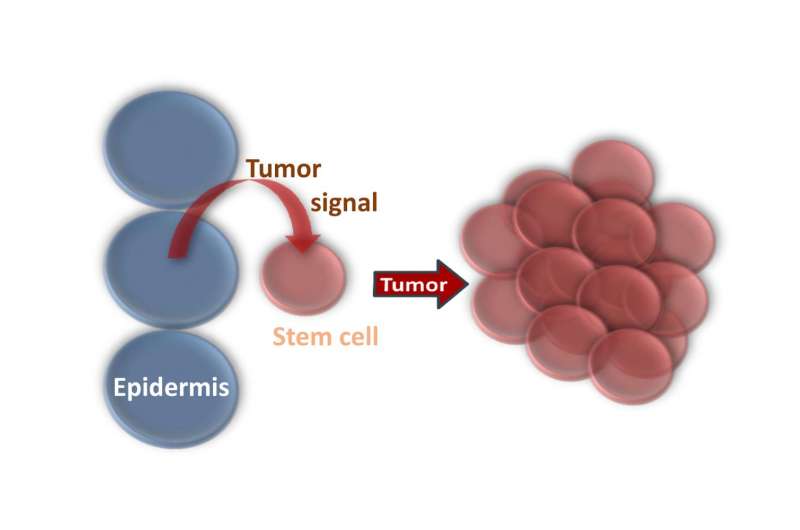Researchers suggest that neighboring tissues can send signals inducing tumorigenesis

Current view is that cancer development is initiated from cells that acquire initial DNA mutations. These in turn provoke additional defects, and ultimately the affected cells begin to proliferate in an uncontrolled manner to develop primary tumors. These can later spread and create metastases, or secondary tumors, in other parts of the body. However, according to a study by researchers at the University of Freiburg, stem cells resulting in metastasizing tumors may also be induced from neighboring tissues, and do not necessarily require initial DNA damage in the affected cells themselves.
Originally, the researchers were simply interested in studying the role of FOXO, a well-known transcription factor that functions as a genetic switch. It has been known for quite a while that the activation of FOXO enhances cellular stress resistance in many organisms. FOXO activity in the roundworm C. elegans actually doubles the animal's lifespan. FOXO has also been shown to have tumor-suppressive properties. However, since in different varieties of leukemia FOXO may also have an opposite role, acting as an oncogene, a research group led by Dr. Wenjing Qi and Prof. Dr. Ralf Baumeister, two molecular geneticists from the University of Freiburg, decided to take a closer look at these contradicting results. For this purpose, they investigated the role of FOXO in cancer development using C. elegans, a tiny 1 millimeter long lab organism that is exceptionally suited to manipulate and analyze genetic functions.
The team of researchers discovered that activation of FOXO suffices to develop tumors in stem cells—omnipotent, immortal cells that have the capability of unlimited proliferation. When investigating the signals inducing this cancer, the scientists discovered that it could not be found in the tumor cells themselves, but came from the surrounding tissues—in this case, primarily from the epidermis. The researchers now hypothesize that erroneous signals from a neighboring tissue are being sent to the stem cells, which then develop into a tumor. The source of this signal not only involves several already known oncogenes, but several newly discovered genes. "With C. elegans, we were able to determine exactly which of the 20,000 genes in its genome are responsible for this tumor," Qi explained. "We've already found more than 10 candidates and we're still not done searching." The team has now published part of their findings in the scientific journal PLoS Genetics. The publication is the result of a project in the Collaborative Research Center (SFB 850) called Control of Cell Motility in Morphogenesis, Cancer Invasion and Metastasis at the University of Freiburg.
"Stem cells lie dormant in many organs. They are a reservoir not only for the immune system, but also to replace damaged cells in the body. They also eventually develop the cells of the embryo," explained Baumeister, who headed the study. "We believe that a misguided signal from otherwise inconspicuous tissues - in this case, the skin - is sufficient to imbalance the regulation stem cell maintenance. The affected stem cells don't need a mutation themselves to develop a tumor. Instead, they suddenly behave like an out of control firework that shoots sparks into a crowd of people instead of the sky."
The researchers now want to decipher and understand the nature of these crosstalk signals. "All of the genes that we've determined so far are also found in humans, and our current findings suggest that tumorigenesis may similarly be induced in humans," said Baumeister. The researchers hypothesize that their results may suggest that metastases can develop without previous occurrence of a primary tumor in another body part. In fact, in roughly one third of all occurring metastasizing tumors, a primary tumor lesion is never found.
More information: Wenjing Qi et al, C. elegans DAF-16/FOXO interacts with TGF-ß/BMP signaling to induce germline tumor formation via mTORC1 activation, PLOS Genetics (2017). DOI: 10.1371/journal.pgen.1006801



















